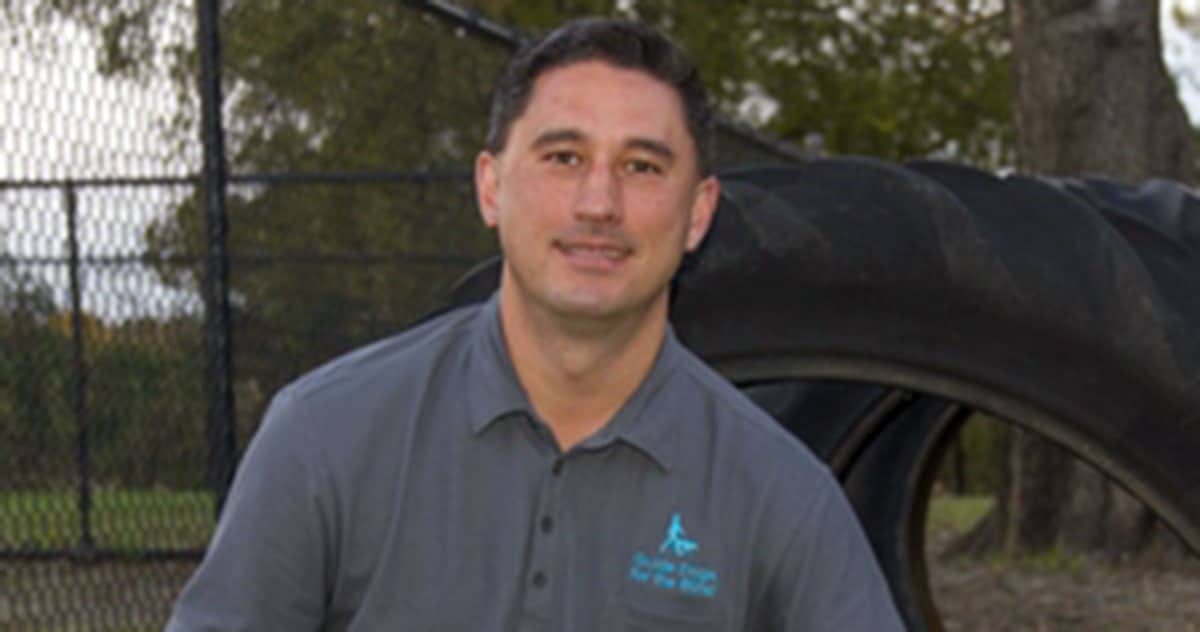March 2017 KPA CTP of the Month
Wayne Dooley, KPA CTP, left his corporate job at AT&T to work fulltime with animals. Now known as “The Dog Trainer Guy,” Wayne offers in-home training through his business of the same name.
In partnership with Animal Hospital of Rowlett Veterinary Clinic, Wayne provides puppy parenting classes to patients and families, as well as mental stimulation activities for pets that are boarding. Wayne also volunteers with service dogs in training.

When Wayne made his move to live and work his dream, he began by volunteering. He invested a great deal of time exploring various ways to work with animals, and absorbing the wisdom of those already in the related fields. In interactions with trainers, vets, and behaviorists, time after time Wayne heard about Karen Pryor and the positive reinforcement philosophy of training. “After doing research on my own about Karen Pryor and the Karen Pryor Academy (KPA) programs, I wanted to learn from the program that was deemed the finest in the field for dog training,” says Wayne. “I wanted to learn from the best!”
In April, 2015, Wayne completed the KPA Dog Trainer Professional (DTP) programin Magnolia, Texas. His instructor was Debbie Martin. Calling the program “very useful and illuminating overall,” Wayne found that learning to break down desired behaviors to smaller, and then even smaller, measurable increments was his most valuable lesson. With this knowledge, “I can clearly communicate what I am asking an animal to do,” reports Wayne. Being able to communicate the logic behind this training technique to clients is also valuable to Wayne day-to-day. Wayne admits that the most difficult part of the KPA program “was definitely that last 100-question quiz!”
Since completing the KPA course and becoming certified as a KPA CTP, Wayne has found immediate and continuing value in his education.

The concepts of positive reinforcement training are really getting out to the public; from a trainer standpoint, I see that positive training is highly requested.

Client referrals have come from vets and veterinary behaviorists who know that Wayne is a KPA CTP. In addition, Wayne reports that “the general public wants the best methods of training.” After doing dog-training research online, many clients make their way to the KPA website to find a trainer for their pets. “I have been fortunate to have been selected to train several pets through the ‘Find a Trainer’search on the KPA website. I am just one of many capable trainers available to dog owners,” says Wayne.
As just one example of how he uses clicker training, Wayne was able to help a family with an 18-month-old pit/mastiff mix dog. Adding a newly rescued bulldog-mix dog in the family, the clients were concerned. “The pit/mastiff was very loving and sweet by himself, but seemed like he wanted to devour the new dog whenever it was in view.” In an initial consult with just the humans and their first dog, Wayne clicker conditioned the pit/mastiff mix for behaviors like polite walking and checking in, showing the owners what to do to continue to mark desired behavior. “After conditioning, we incorporated clicks/treats for checking in during walks. The pit/mastiff mix picked up what we were doing really quickly,” recalls Wayne. Next, the new dog was brought into view but afar. At first the pit/mastiff mix seemed concerned, but his desire for the treat took over and he ignored the new dog. “Long story short, I continued to reduce the proximity of the new dog over several sessions and progressed to close proximity. The pet parents practiced, and the next time I visited, both dogs greeted me at the door, off leash and best buddies. The results were very speedy and satisfying!”
Lessons from his KPA experience have been helpful to Wayne as he works with service dogs in training as a volunteer for Guide Dogs for the Blind (GDB). AGDB puppy-raiser since 2013, Wayne teaches good manners and basic obedience.

We take the puppies out on outings—anywhere that a visually impaired person might need or want to go: public transportation, doctors’ offices, and even concerts!

In the quest to ensure that service dogs are well socialized, and not fearful or reactive, Wayne explains, “I do not use a clicker with the puppies, but use verbal markers to train cues such as sit and down, as well as behaviors like loose-leash walking and recall.”He reports that skills from the DTP program have really helped him communicate with the pups and modify training plans to each dog’s needs. Wayne has raised two puppies for GDB; both passed all eight phases of training and are working guides, one in Maryland and the other in Toronto, Canada. “My third GDB puppy is only 9 months old and slept quietly by my side while I completed this interview,” reveals Wayne. Wayne has also trained some basic cues with Casey, his family dog, using positive methods. Casey is deaf, but Wayne says that “training a deaf dog can be challenging, but it is not impossible.”
Working with Dr. Downes at Animal Hospital of Rowlett Veterinary Clinic, Wayne conducts many puppy socialization classes for “long-time pet parents to brand-new ones.” In several cases, “long-time pet parents have been stunned to see how quick and easy it is to implement new concepts and behaviors,” Wayne reports. Wayne has also worked with clinic staff on what he calls “positive distractions” for dogs that might be a little fearful or reactive during procedures. “We are moving forward and implementing the ‘Fear Free’ initiative at the clinic, too.”
When it comes to his human students, Wayne believes that the KPA program showed him how to teach so that a learner can understand what is expected and progress in small steps. That way, there is a greater chance for success. Wayne and his wife have talked about positive training. His wife, a high-school teacher, has applied these techniques with her students with positive results! Per Wayne, “when you set a learning experience up for success it usually happens.”
At the clinic, Wayne is continually learning as he problem-solves scenarios and dilemmas that everyday pet owners face. This hands-on experience is often combined with extra reading and research. “I have explored scent work, incorporating what I learned in the DTP program, but have not progressed far yet.” Wayne sees himself reaching for other KPA-taught skills as he expands his work with guide dogs and therapy dogs, and, hopefully, “with medical-alert dogs in the future.”
Considering a “fun fact” that he shared, Wayne may have opportunity to learn more about how dogs help in the medical arena. “I am the trainer for ‘Shiloh,’ the house therapy dog and ‘Chief Cheer Officer’ for the Ronald McDonald House of Dallas. I volunteer as his trainer and teach his therapy team how to handle him in therapy situations.” Hurray, for Shiloh, and for you, Wayne!

